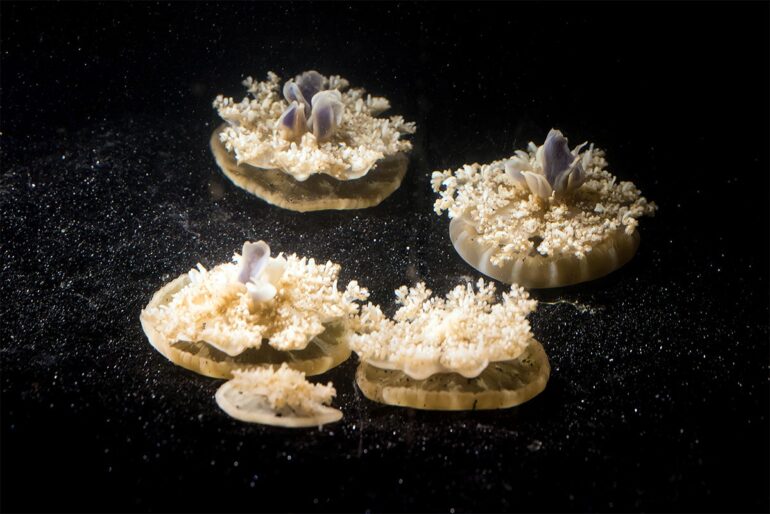Researchers at the California Institute of Technology have recently discovered genes that induce and regulate sleep may be much older than previously described. The team studied the upside-down jellyfish Cassiopea to determine if these animals, which lack a centralized nervous system, still require sleep.
To arrive at this conclusion the team monitored the jellyfish in an aquarium for 6 consecutive days and nights. Rather than swimming in the water like most jellies, Cassiopea rest upside down on the sea floor pulsing their bell on average one time per second. This pulsing flushes water and food particles over their tentacles and also provides a quantifiable means to study these creatures.
The study led by Caltech biologist Paul Sternberg and published in the journal Current Biology, found that at night jellyfish reduced their pulses to 39 times per minute indicating a restful or sleeping period.
To make this finding, Sternberg and his colleagues had to first come up with a definition of what sleep might look like in a jellyfish. They decided to focus on three phenomena – decreased activity, decreased response to stimuli, and an increased drive to sleep when prevented from doing so.
The results show that sleep is an extraordinarily widespread behavior through the animal kingdom, indicating that the genes that control it are both ancient and robustly retained. It’s a conclusion that prompts a fascinating question: in the story of life, just when did sleep emerge?
“It may not seem surprising that jellyfish sleep – after all, mammals sleep, and other invertebrates such as worms and fruit flies sleep,” says co-author Ravi Nath.
“But jellyfish are the most evolutionarily ancient animals known to sleep. This finding opens up many more questions: is sleep the property of neurons? And perhaps a more far-fetched question: do plants sleep?” [Science]



